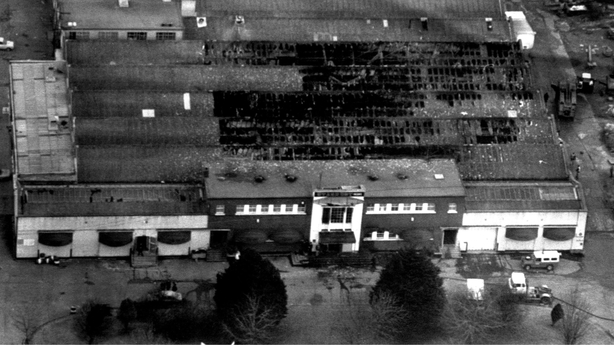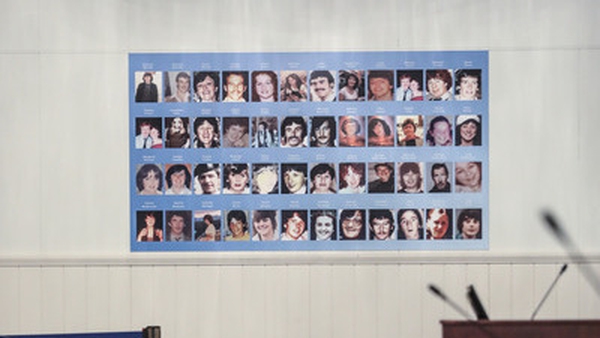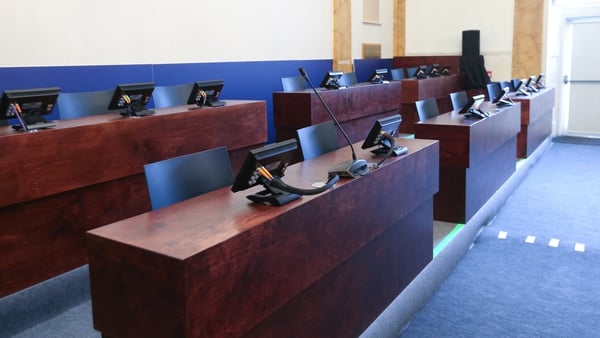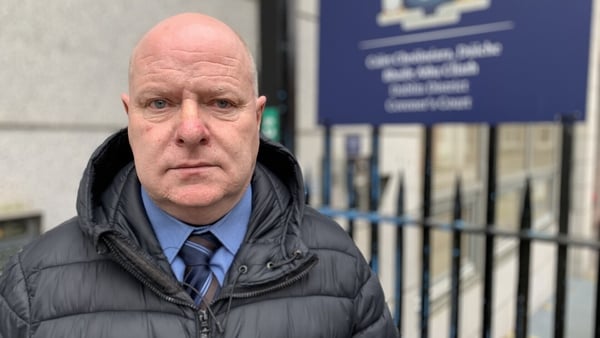The Stardust inquests have been told how a former fire surveyor who inspected the premises deemed the risk at the club as "pretty horrendous".
Richard Williams was giving evidence at the Dublin District Coroner's Court on what was day 80 of these proceedings.
48 people died in the 1981 fire at the nightclub in Artane in Dublin.
The court heard that Richard Williams was working as a fire surveyor at the time which involved inspecting premises to see if they were high risk or not.
He said he was sent out to the premises as part of a possible quote in 1981 and was involved in checking on "construction" and "linings" but did not include patron safety.
The court heard how he deemed the fire risk was "pretty horrendous" and recommended no quote be given.
He said a cold room had been installed behind the bar and that the polystyrene foam insulation used was considered to be "highly combustible".
The court also heard how he saw a fire exit was chained on his visit, which occurred during day time hours.
He said that although it had nothing to do with his job, he was "assured" that the chains were removed before the public entered.
He agreed with Sean Guerin SC, representing families of the victims, that it was obvious that the locking of doors with chains with people inside was a "profoundly dangerous thing to do".
The inquests also heard how flames were spotted coming from the roof of the building as people were still inside the disco.
Anthony Pasquetti, who lived near the club at the time, was continuing giving evidence today at the Dublin District Coroner's Court.
It heard how the then 19-year-old had returned home from socialising in the early hours of Saturday 14 February when he heard crackling noises and sparks.
In court today, he said the noise of the crackling "was unbelievable".
The inquests heard how he went upstairs and looked out a bedroom window and saw the roof of the Stardust "glowing".
He then went back downstairs and climbed on the roof of his garage. He said at that stage, the flames "had broken through".
He agreed with Des Fahy, KC, representing families of the victims, that his evidence is "clear" that around 1.38/1.39am, fire was visible through the roof of the Stardust.
"Yes, absolutely," Mr Pasquetti said today.
He said the flames were around 10 feet in height and they were "rolling" across the roof.

The inquests have previously heard how the fire was first seen inside the ballroom at approximately 1.40am in the partitioned area known as the west alcove, with many witnesses describing it initially as being small.
The court heard Mr Pasquetti then went around to the front of the club and first saw kitchen staff coming out.
He also noticed "older people" with "drinks in their hands" exiting the adjoining Lantern Room bar.
Mr Pasquetti agreed that it was a "few minutes later" before he noticed young people coming out of the disco.
He said the emergency services were not there at that stage and said they came "about five minutes" after he got there.
Questioned by counsel Dáithí Mac Cárthaigh, about where in the roof of the Stardust did he first see the flames, it was put to him that it was in the area over the store room and the lamp room.
"It looks like it, yes," he said.
'It would not budge'
Fergus Kane, who was 18 years old in 1981, recalled his efforts to escape the blaze.
He spoke of putting a coat over his head to avoid the smoke and running towards Exit 5 and of his repeated, but failed efforts, to get it open.
The court heard how he was rattling on the push bars and could feel the chains.
'It would not budge,' he said. He also ran at the door with his shoulder but bounced off it.
Mr Kane told the court how he took shelter under a table and later looked towards the exit and saw a beam of light from a fireman's torch.
The inquests heard he had been there that night for a farewell for Eugene Hogan - who had been due to move to Kerry the next day with his family for a new job.
Eugene Hogan's wife was also there, she survived the fire, but 24-year-old Eugene did not. They had two young children at the time.





